Look, SEO isn’t rocket science … but it sure feels that way when your traffic keeps tanking despite following every “best practice” in the book.
So none of these below again are rocket science, but here we go.
#1: The Painfully Obvious Stuff First
You’re either getting traffic and leads, or you aren’t.
That’s it.
I’ve seen too many marketers (myself included) dive into complex analytics while ignoring this fundamental truth.
Your Google Search Console shows declining impressions, your conversion tracking shows crickets, and your boss is asking questions.
If your traffic (or rankings .. or sales/leads) chart looks like this, your strategy probably isn’t working.
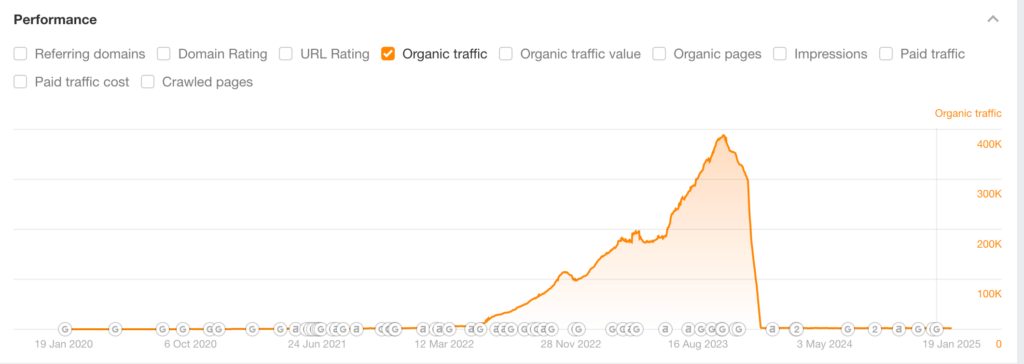
#2: Non-Brand Traffic: The Number That Actually Matters
Let’s get real: Your brand-name traffic means nothing for SEO.
Sure, it’s nice that people search for “ACME widgets” and find you — they were looking for you anyway.
The real magic happens when someone searches “best industrial widgets 2025” and lands on your site.
Here’s ultimately what you want to see.
While I was at Neil Patel Digital I lead the SEO engagement with Western Union and my team and I helped them scale out their currency converter section of their site which drove a ton of non-brand traffic and helped them rank for tons of terms. Here was the chart:
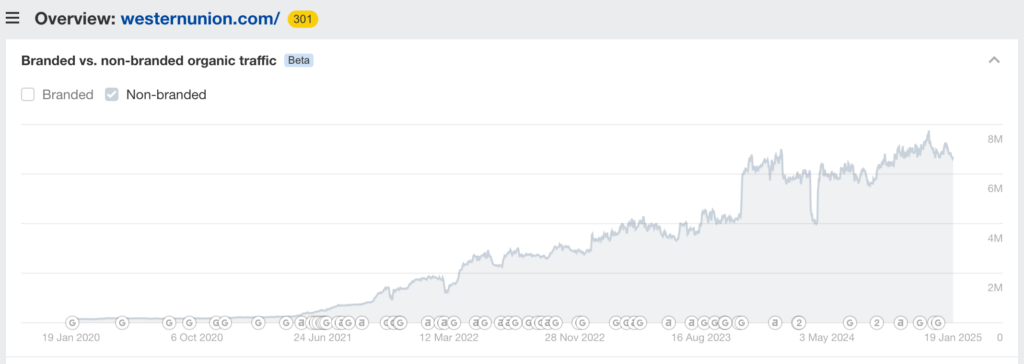
We also did the same thing for Sofi. They created a TON of content in their /learn/ section targeting users across all parts of the funnel, and it worked really well.
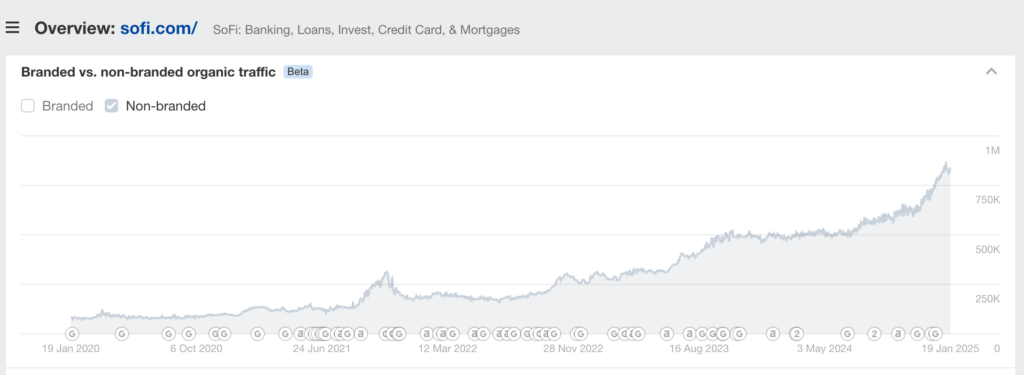
The charts above are great and can work for enterprise brands because they have a ton of links and are able to rank for those types of keywords.
Here are some of the page in that section that are currently driving traffic.
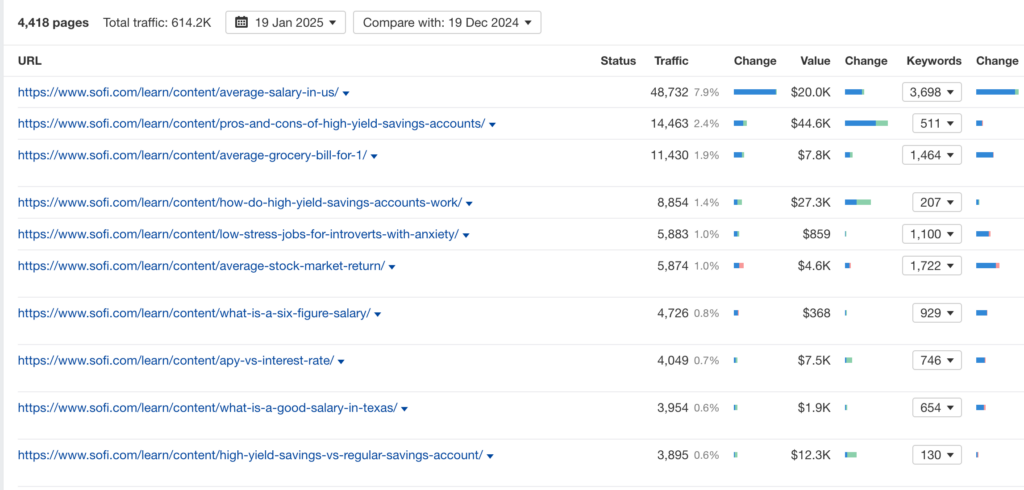
While this worked for Sofi and Western Union, it may not be the best strategy for you since your site may not be able to rank for the most competitive terms in your industry.
It’s going to be really difficult to rank for ‘average salary in the US’ if you’re a small site. You need probably 134 other websites to link just to that page. So probably not a great place to start if you’re still getting started.
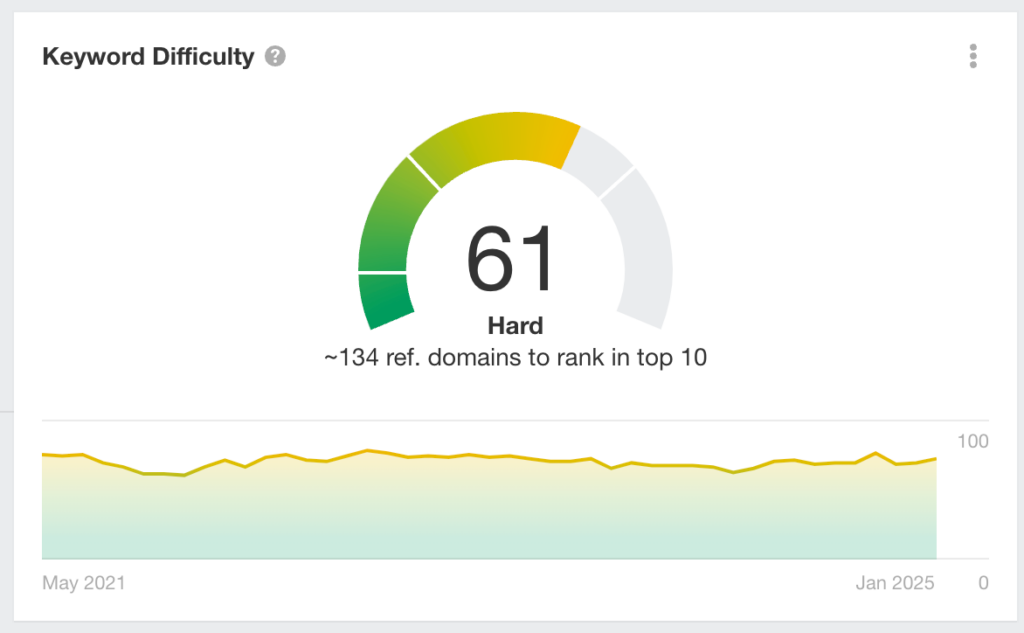
A better place to start if you were trying to rank for that keyword might be going after ‘average salary in the US per month.’ You can see some of the top ranking sites are little more attainable:
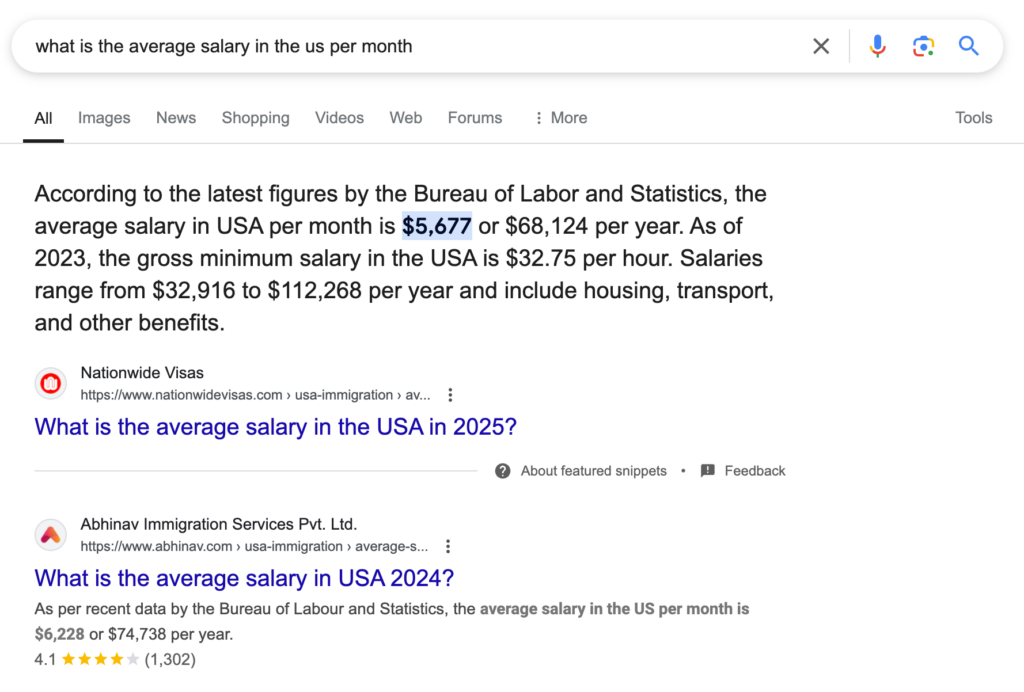
Can’t stress this enough … you gotta create content based on where you’re at. And don’t fool yourself into thinking that you can rank for stuff that you can’t.
Pretty sure the late great physicist Richard Feynman was talking about SEO when he said:
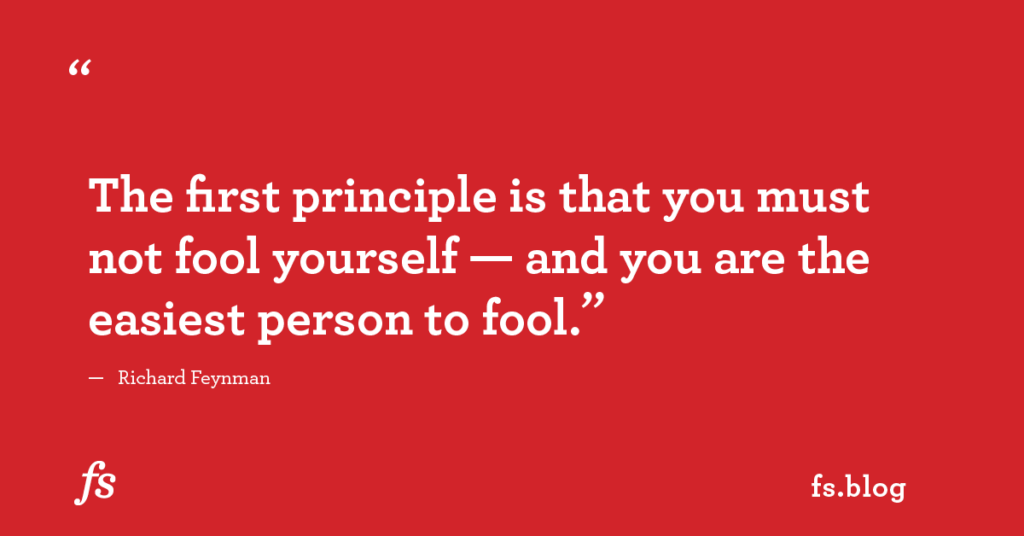
#3: When your content feels like it’s shouting into the void
You’ve added fresh examples, fixed outdated stats, and even included that fancy new GPT-4 comparison table.
And… nothing. Zero movement in rankings.
This happens for three reasons:
- Your target keywords are tougher than a $2 steak (see above; looking at you, everyone trying to rank for “best CRM”)
- The page has fewer links (both internal and external) than a startup’s 404 page
- You’re targeting keywords nobody actually searches for
The only good thing, is that you’re not alone.
Check out this RIDICULOUS stat from Ahrefs:
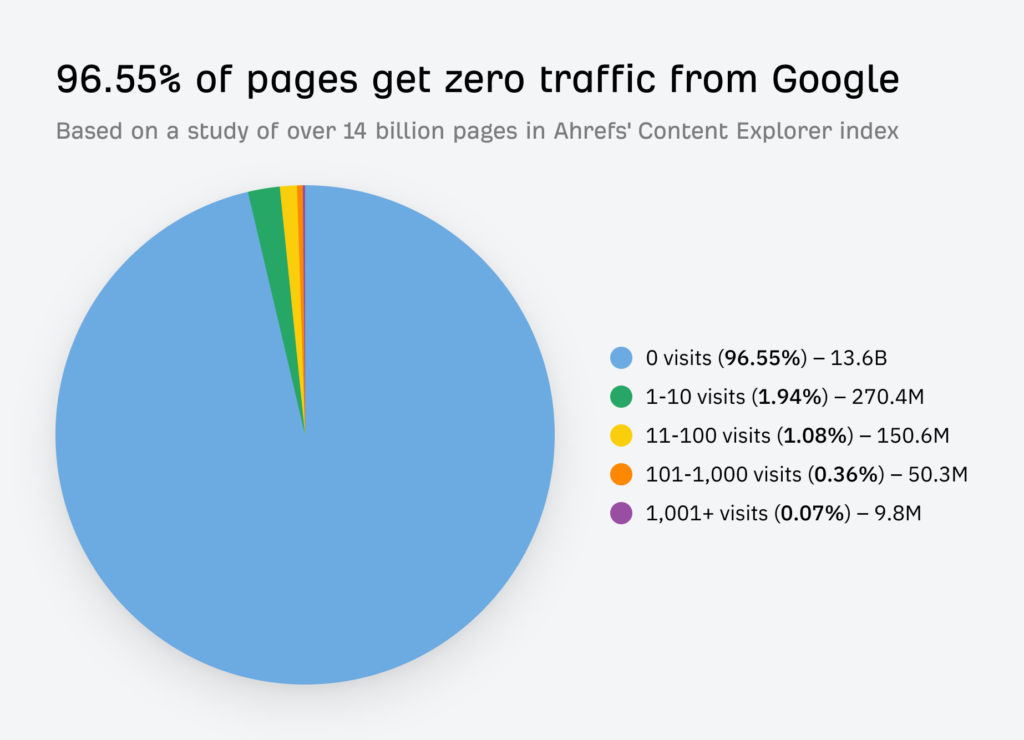
So yeah, this is not a club you want to be part of. Ensure the content you’re creating actually has the ability to rank and generate traffic.
The Fix (Sort Of)
First, grab a drink. You’ll need it. Then:
- Track your non-brand traffic separately. If you’re not splitting brand vs. non-brand in Google Search Console, you’re flying blind.
- Check your keyword difficulty scores against your domain rating. Ahrefs shows you dominating the SERPs with a DR of 27? Yeah, right. Same energy as thinking you’ll beat Magnus Carlsen at chess after a week of practice.
- And please, for the love of all things digital, stop creating new content until you’ve fixed your existing stuff. Your site isn’t a content farm from 2010.
